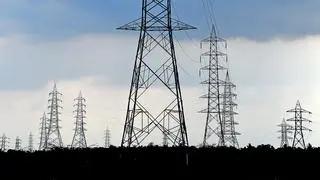After the Cooper Tire acquisition, concerns on Apollo Tyres biting off more than it can chew have seen the stock nosedive 30 per cent in two days. At Rs 64, the stock now trades at a valuation of about 5.3 times its trailing 12-month consolidated earnings and about 3.5 times the likely consolidated per share earnings for FY14. Although valuations may be attractive, time may not be ripe yet for fresh exposures to the stock. The management expects the acquisition to contribute to earnings immediately. However, the huge debt burden taken on for funding the acquisition does pose a challenge.
Concerns remain
At 4.8 times EV/EBITDA (2012 earnings), Cooper has not come cheap. Goodyear’s EV/EBITDA for example, stands at 4.2 for the same period. The 40 per cent premium to market price that Apollo paid may be justified considering Cooper’s strong presence in the US markets and its good hold over high-margin replacement markets.
However, that Apollo is funding the entire deal through debt raises some concerns. After considering the acquisition, the company’s net debt-to-equity ratio moves up to 1.9 times from the 0.7 times for the year-ended March 2013.
Though company expects to realise integration benefits to the extent of Rs 460-690 crore ($ 80-120 million) over the next three years, one-time integration costs of about $40 million will be incurred over the next two years. Besides, the incremental interest costs on the debt work out to Rs 1,450-1750 crore ($ 250-300 million).
The company expects the acquisition to add to Apollo’s EPS from year one onwards, but a higher debt burden becomes a challenge at times when raw material prices turn unfavourable for the tyre industry. In 2012 for example, though demand in both the Indian and European markets was weak, the company saw better profitability due to the fall in natural and synthetic rubber prices. While the consolidated top-line grew only by 5 per cent to Rs 12795 crore, adjusted net profits moved up by 35 per cent to Rs 613 crore.
Complements Vredestein
That said, the acquisition is a strategically a good fit. While its acquisition of the Netherlands-based Vredestein Banden in May 2009 gave Apollo a foothold in the European markets, Cooper Tires will help the company spread its wings in the US. Cooper derives about three-fourths of its revenues from the North American markets.
After this buy, Europe and US will together bring in 50-60 per cent of Apollo’s consolidated revenues.
Cooper complements Vredestein in terms of product line. While the latter focuses on winter and speciality tyres, these tyres contribute only to 10 per cent of the revenues for the former. Cooper instead focuses on light vehicle tyres.
The demand for these tyres from Cooper has generally proved to be resilient to a slowdown in the US. In 2012, for instance, its passenger and light truck tyre shipments grew by 1.5 per cent and 12.5 per cent respectively (year-on-year), as against the 2-2.5 per cent fall recorded by the tyre industry as a whole in these segments.
Finally, Cooper’s manufacturing base in China is an advantage to Apollo. Its reputation as a low-cost manufacturing base and proximity to India and rubber producing nations of South-east Asia will stand Apollo in good stead.








Comments
Comments have to be in English, and in full sentences. They cannot be abusive or personal. Please abide by our community guidelines for posting your comments.
We have migrated to a new commenting platform. If you are already a registered user of TheHindu Businessline and logged in, you may continue to engage with our articles. If you do not have an account please register and login to post comments. Users can access their older comments by logging into their accounts on Vuukle.